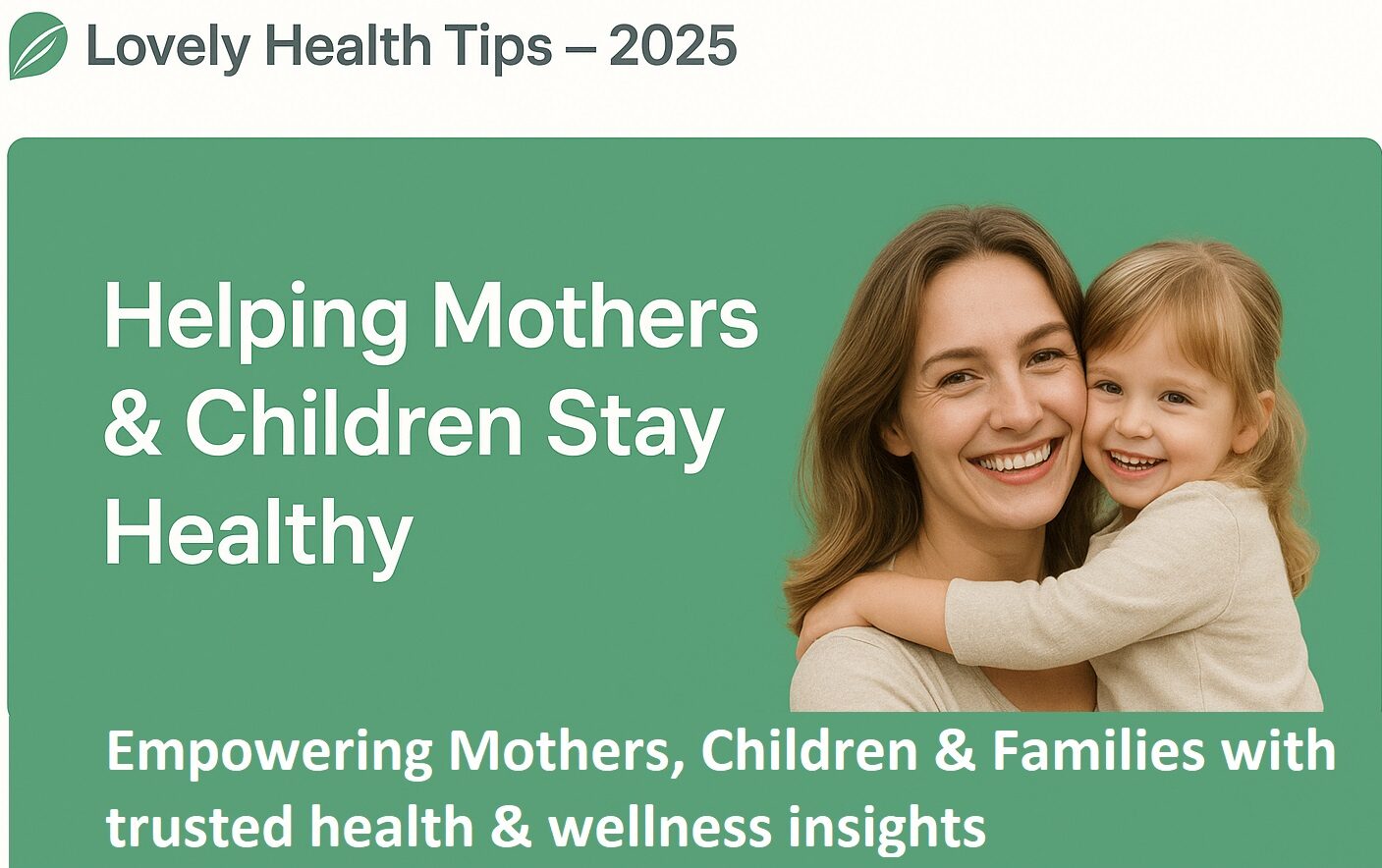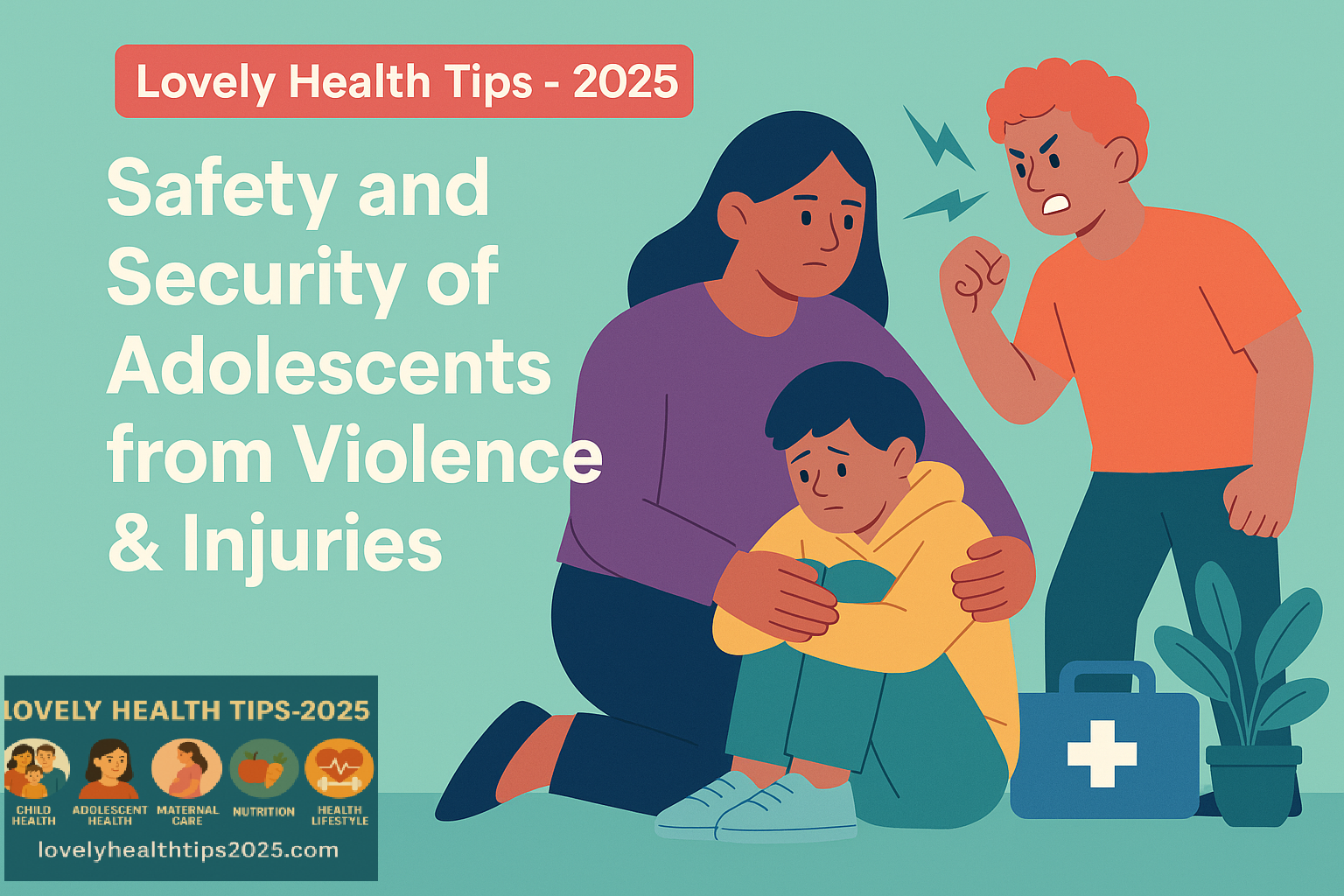Last Updated on October 21, 2025 by
Safety security:
Introduction for Safety security:
During adolescence period, young people experiences essential transitional development which connects their childhood to their future adulthood while undergoing fast physical and psychological with emotional transformations. At this developmental period young people need safety from various kinds of violence while simultaneously being at higher risk for abuse and neglect and exploitation as well as accidental injuries. Safety security warrants condemnation from the public health sector because this duty extends to obligations which must be fulfilled by society and its members.
Emotional Violence:
A person deliberately using certain actions against other who will lead to emotional trauma and psychological injury. The act of naming others through abusive terms qualifies as an example of emotional violence along with bullying and verbal mistreatment as well as abusive language use.
Sexual Harassment and Safety security:
The practice belongs to the category of sexual violence. A person’s sexual freedom becomes subject to violence through sexual attacks or attempted assaults no matter the victim’s relationship with the offender. The examples of sexual violence include sexual comments without consent and child sexual abuse affecting both boys and girls along with sexual molestation.
Physical Violence:
A person inflicts injury on another intentionally when they perform physical violence. Various situations constituting physical violence include wife-beating alongside corporal punishment in schools while parents use beatings to discipline their children and physical fights between siblings.
Domestic Violence :
It the violent or aggressive behavior within the home. Domestic violence goes beyond the physical violence since emotional and sexual violence fall under this umbrella.
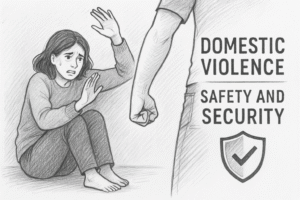
Bullying :
Emotional violence expresses itself through bullying by using power against weaker individuals to cause enduring emotional trauma. Bullies frequently choose physical violence as their method of harassment besides emotional attacks.
Due to abuse & violence, do children at risk?
- Marital discord homes, financial crises, sickness (severe/terminal sickness).
- The lack of parental supervision occurs in a case where such conditions exist.
- Youngsters who exhibit a severe form of adult-related anxiety.
- Domestic violence goes beyond physical violence since emotional and sexual abuse are within its domain.
- Language contains multiple categories of children without parental support including orphans and separated children and children working on streets or in institutions or labor or living without guardianship.
- Children also feel neglected by parents since they always find them busy with other works. Physically or mentally challenged children are a part of this group. All the children are vulnerable as they require the protection of adults as well as receiving care and support
How violence impact the child ?
- Shock
- Fear
- Confusion
- Sadness
- Guilt
- Shame
- Anger
Students experience three main impacts from violent incidents as follows:
- Concentration issues
- Mental health issues
- Physical health issues
Visible Detectors of Abuse –
- Behavioral
- Social Withdrawal
- Extra hostility or hostility
- Over pleasing behavior
- No groundedness to parent/caregiver
- Achievement changes suddenly
- Use of abusive sexual words
- Substance abuse : link as below:
2. Psychological
- Eating/sleep disturbances
- Anxiety or Indifference
- Depression
- Suicidal ideation/attempts
3. Sexual
- Pregnancy
- Sexually transmitted Diseases and infections
- Sexualized behavior/early sexual activity
4. Physical
- Psychosomatic illnesses
- A person may experience pain together with swelling in the genital area.
- Repeated urinary infections
- Vomiting serves as an effect of poisoning along with drowsiness and seizure occurrences.
- Respiratory issues that develop due to drowning accidents combined with suffocation events
- Toxic poisonings
- Bite marks, bruises, burns
- Poor appearance and hygiene
- Problems in Health with developmental
Where there is a chance of violence :
- School
- On the way to school
- Home
- Community
- Cyberspace
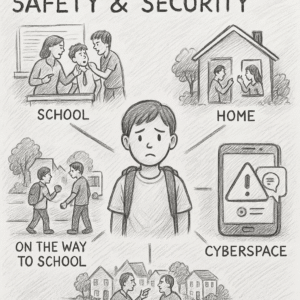
Violence may occurs in the following areas:
- Dark isolated rooms
- Inside classrooms
- On the internet
- Computer labs
- Playgrounds
- In the ares Without direct supervision of adults
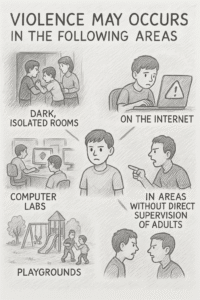
Some common types of Violence against boys & girls
- Name calling
- Exclusion
- Teasing
- Bribing
- Bullying
- Hitting
- Pushing
- Damping property
- Kicking
- Harassing
- Spreading rumors
- Gossip
- Hair pulling
Effects of violence for Boys
- Scared
- Ashamed
- Angry
- Worthless
- Hurt
Effects of violence for Girls
- Scared
- Stressed
- Sad
- Left-out
- Worried
- Hurt
- Angry
How violence spreads?
- The occurrence of violence extends from school campuses to adjacent areas along with areas accessible to the public.
- People need to stay alert to detect violence both inside and near school buildings as well as in public locations. All expressions of violence need to be rejected.
- We all need to get help when this type of violence happens and help prevent it from happening again.
- The occurrence of particular kinds of violent events shows detectable patterns regarding their specific locations and timing.
- The analysis of emergency data patterns enables us to create strategies which fight violence while making schools and their surrounding areas together with public areas safe for everyone.
- Violence together with abuse creates adverse effects on physical and mental health provisions that weaken someone’s academic ability and social engagement potential and can lead to isolation
- The basic rights of children get violated through violent and abusive behavior.
- Physical sexual and emotional abuse together with any form of violence stand as unacceptable acts.
- Physical harm as well as emotional and sexual harm through violation of gender stereotypes defines gender-based violence.
- Someone should never observe touch or speak about your individual body regions unless their purpose is your hygiene or health maintenance.
- The right to say no will protect you from violation. In situations where your safety is at risk you can use the safety approach that involves the steps of “No, Go, Tell” pattern. Say No assertively.
- The struggle to disapprove encourages you to begin replacing the idea “no” with “I am willing to stop the abuse.”
- Ignore that someone anytime you obtain the possibility to leave.
- Make your way to locations with more people present or disconnect from your online activities in situations of cyber-bullying.
- Warn a trusted person about the situation as you ostensibly repeat the message until someone can step in to help.
Seeking Help to be Safe
- Children need to work toward maintaining their safety together with safety of others.
- To stop harassment of friends or peers you should request the teasing individual to stop then consult with a trusted adult.
- Generic student population possesses rights which function through legal mechanisms for abuse disclosure.
- Not a single victim of misbehavior will ever have the responsibility to accuse the events to himself.
- Sooner or later the responsible party becomes identified as the abuser of children or adolescents regardless of when they will appear.Your inability to refuse abusive situations or ask for help from an adult cannot be considered your responsibility.
- Wait only until you possess sufficient assurance before doing it.Children find protection under laws that prevent their abuse.
- The Government of India established Protection of Children from Sexual Offences Act (POCSO) which provides support to children when someone conducts sexual abuse.
- Any individual who sexually mistreats children alongside persons who violate rights must expect to receive legal consequences.
Violence, Injury and Seeking Help
- Every person retains the right to experience safety both from abuse and violence.
- Report and verify every incidence of violence to responsible adult persons.
- Abuse prevention goes hand in hand with the method of No, Go, Tell when someone tries to abuse you.
- The law provides specific support for children together with their rights as young people.
- It sometimes becomes difficult to look for assistance.
- You do not have to bear the abuse against you.
Knowing many types of Risky Behavior & taking responsible steps
- You will feel responsible as you will still be able to take care of your own health state and assist other people because it means upkeeping commitments and being reliable enough to assist in the cases of need.
- Make decisions that fulfil your desires rather than act in favour seeking the favour of others.
- The following decision-making steps would be beneficial for reflection before taking action or making decisions:
- Is it safe for me?
- Does this action present safety risks for yourself and for anyone else?
- The outcomes of both immediate and distant future resulting from my action or the choice I make could be what?
- Risky actions have the potential of harming the individual practitioners as well as other individuals at the same time.
Role of guardians in prevention of violence against adolescents:
As an individual
- Use oneself as a forceful argument to others how they should fight against violence.
- Constructive discipline strategies should be employed to develop respectful interactions and foster self-discipline combined with self-motivation.
- Raise against Violence and discrimination with different marginalized communities
As a colleague
- The institution requires a complete solution to establish protected welcoming facilities for students.
- Advocating the school environment safety measures.
- You must develop an association with the stakeholders that offer the support services
What not to do by other for safety security?
- Panic or overreact
- Blame the child
- Pressure the child to talk Question too much or aggressively
- Demand to child to forget and accommodate changes
- Children should retell the events of the trauma to the therapist.
- Confront the offender in the presence of child
Which actions should be taken when students create harm to others?
- Listen to hear and understand what the person thinks
- Acknowledge feelings
- Display to the student images that showcase his or her positive qualities
- Discussion of different behavior patterns which can be accepted easily
- The procedure entails showing consequences on choosing the future behavioural options.
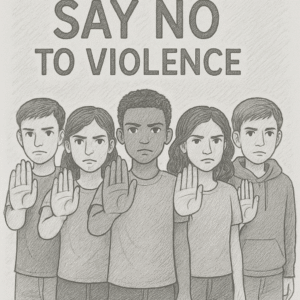
Following is the You-tube video link for Safety security against violence & injuries: https://www.youtube.com/embed/7W-MQWHHSo0?si=0qZkVZOsGmqZHYQm
FAQs:
Q1: What are the major concern of Adolescent safety is a today’s age?
Ans. Young persons stand in a pivotal developmental period which impacts their physical condition as well as their emotional state and their social environment. The combination of bullying and abuse when added to peer pressure and road accidents along with online threats exposes them to serious risks. Ensuring that the adolescents are safe will ensure their wellness is developed over a period of time
Q2: Which types of violence are faced by adolescents in day to day life?
Ans: Common forms are:
- Some types of Physical assault viz. hitting, slapping, fighting etc.
- Many types of Emotional abuse like verbal threats, humiliation etc.
- Sexual abuse or harassment
- Bullying and cyber-bullying
- Domestic violence exposure
Q3. Please explain some causes & main contributors for adolescent injuries.
Ans. Some causes are:
- Accidents due to Road traffic especially for pedestrians, cyclists & new drivers
- Falls from height and also some sports related injuries
- Self-harm or suicide attempts
- Substance abuse-related accidents
- In many times, family members or peer groups are involved in Violence
Q4. What are the four strategies that addresses adolescent safety that parents can foster?
Ans. Parents may:
- Need to establish open lines of communication which should happen frequently with their children
- Should establish definite guidelines which specify how students should interact with peers as well as their online activities and conduct.
- Monitoring by parent to be done without invading privacy
Q5. What may be the role to be played by school functionaries in adolescent safety?
Ans. Role of School :
- Many policy should be implemented in the school such as anti-bullying on priority basis.
- School should adopt and offer the support the students in their mental health
- However, authority from school should instruct the students about their personal security & digital proficiency
- The environment must provide protection alongside inclusive together with respectfulness.
Q6. Young people need to follow what measures to stay protected against violence.
Ans. Adolescents may:
- Mature students should develop an ability to identify risky circumstances then they can receive assistance.
- Peers must selected with positive mentality peers
- If one adolescent found any kind of un-hygienic behaviour, they must avoid such unsafe area
- Adolescents must not tolerate cases of bullying or harassment and simply stand by and watch.
- Any cases ought to be reported to the reliable adults.
Q7. Early detection of violence risks and indications leading to injuries or harm in adolescents requires what warning indicators?
Ans. Look for:
- Any sudden abnormal behavior like aggression, withdrawal of adolescents
- Bruises or injuries which can’t be explained by adolescents.
- Poor academic performance
- If they are isolated and not linked with their friends or family members
- Depression or anxiety found
- Possible indicators of abuse
- Acts of bullying or other intimidating risks
Q8. Did India adopt safety norms with disaster counter contact systems to secure its teenage population?
Ans. Yes.
- The POCSO Act (Protection of Children from Sexual Offences) is used by India to protect its children and teens.
- Operates the helpline services: Childline 1098 – a 24/7 helpline for children in distress
- For giving online reports for threats and abuse, Cyber crime Helpline 1930 may be contacted.
Guideline of WHO for injuries and violence its link as mentioned below: https://www.who.int/news-room/fact-sheets/detail/injuries-and-violence
Thanks and Regards
About the Author – “Mr. Bibhu Ranjan Mund”, Master in Public Health (MPH) from IIHMR University, Jaipur (Rajasthan) has experience of 18 years in Public Health activities. Through “Lovely Health Tips-2025”, we share the evidence & experienced based health & wellness guides with solutions for every day well-being. More from Author
Disclaimer
This information is suggestive only and not a replacement for medical advice. For more detail, please visit to my website as mentioned below:
